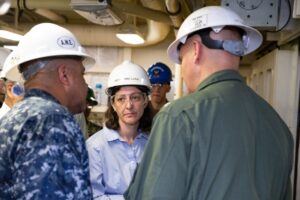
The House Armed Services Committee’s defense policy bill, approved Thursday, includes a provision that would create a new commission to study the Navy’s future force structure and shipbuilding with an eye for potential legislative action. This amendment, sponsored by Rep Elaine Luria (D-Va.), was included in the chairman’s mark en bloc amendment package two, which was approved by the full committee. This “National Commission on the Future of the Navy” would have eight members, a mix of both legislators and…

 By
By 











